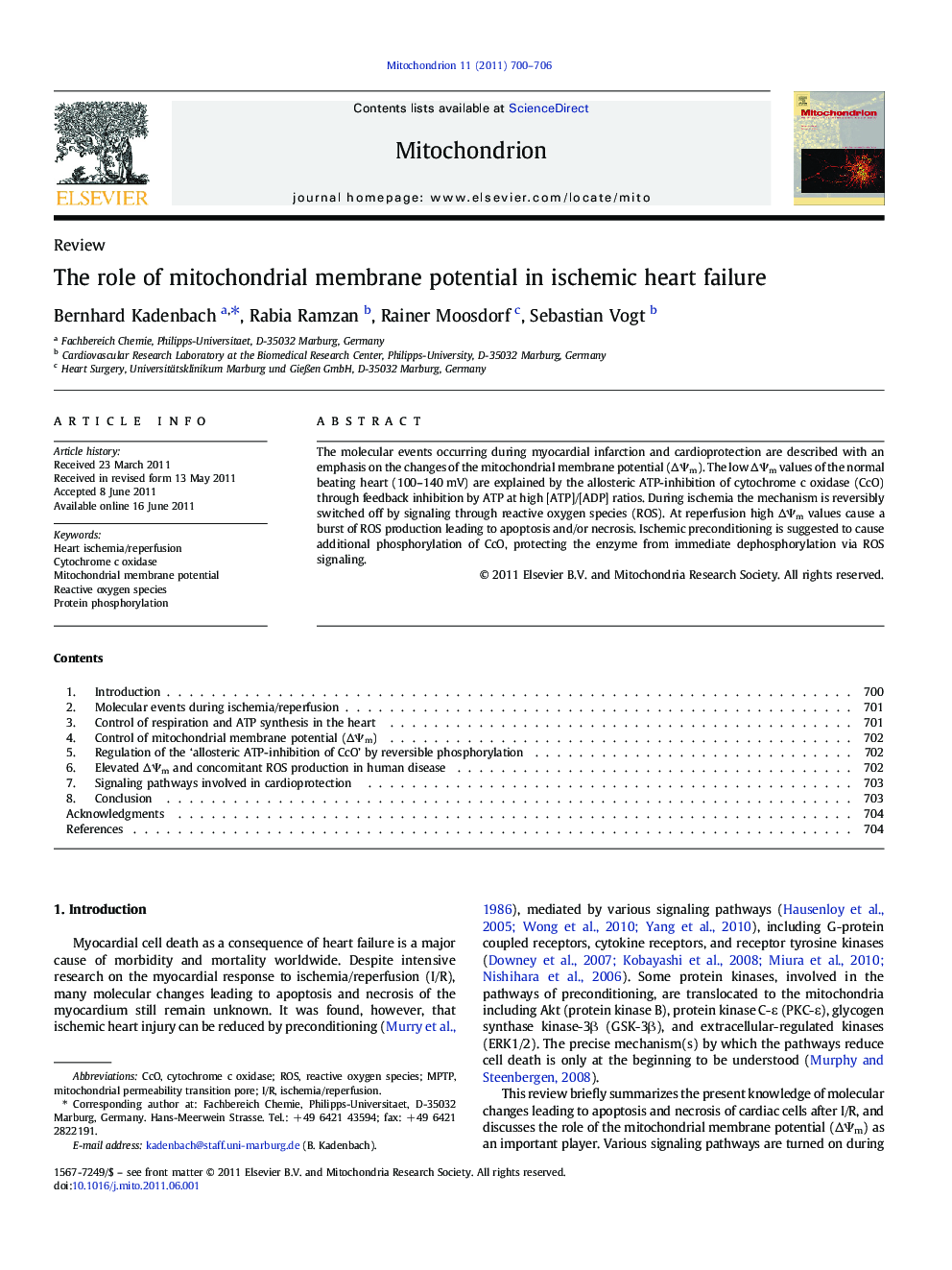| Article ID | Journal | Published Year | Pages | File Type |
|---|---|---|---|---|
| 2068782 | Mitochondrion | 2011 | 7 Pages |
Abstract
The molecular events occurring during myocardial infarction and cardioprotection are described with an emphasis on the changes of the mitochondrial membrane potential (ΔΨm). The low ΔΨm values of the normal beating heart (100–140 mV) are explained by the allosteric ATP-inhibition of cytochrome c oxidase (CcO) through feedback inhibition by ATP at high [ATP]/[ADP] ratios. During ischemia the mechanism is reversibly switched off by signaling through reactive oxygen species (ROS). At reperfusion high ΔΨm values cause a burst of ROS production leading to apoptosis and/or necrosis. Ischemic preconditioning is suggested to cause additional phosphorylation of CcO, protecting the enzyme from immediate dephosphorylation via ROS signaling.
Keywords
Related Topics
Life Sciences
Biochemistry, Genetics and Molecular Biology
Biophysics
Authors
Bernhard Kadenbach, Rabia Ramzan, Rainer Moosdorf, Sebastian Vogt,
